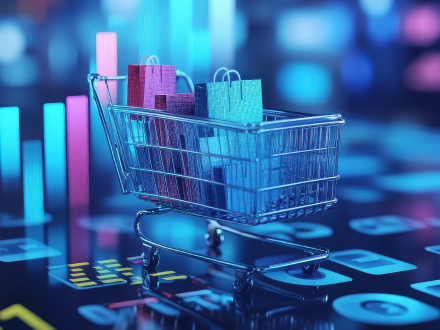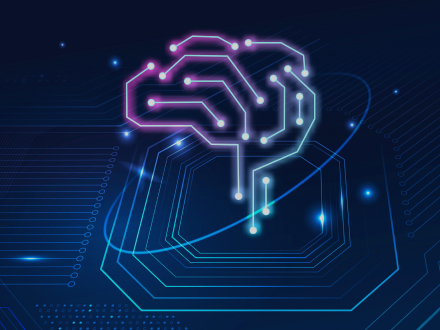Your message has been sent.
We’ll process your request and contact you back as soon as possible.
The form has been successfully submitted.
Please find further information in your mailbox.


We have all heard about big data and how it’s started to rule the world. Everyone is saying that it’s the future of data analytics, but if you’re going to put big data to work for you, it’s important that you understand what exactly this term means. Going into big data without a solid understanding of it is just too big a risk. So, let’s find out what Big Data is, how it can be used, and where it’s going next.
Let’s start with a definition.
There are three Vs to big data: variety, volume, and velocity. In simpler terms, it’s a large and complex set of data. This new type of large data set can give much more information for businesses to help them make data-driven decisions, but it can’t be handled by traditional data processing software.
Now that you’ve got a solid understanding of what big data is, you can probably see all the ways it’s already influencing your business. Almost every sphere of our personal and professional lives is driven by data as we rely more and more on the Internet and related devices. It’s clear that big data is nothing less than the future of data and maintaining valuable data sets is the future of analytics.
Before big data emerged, analysts only stored structured data, but the amount and types of collected data have increased over time. As data became unstructured and semi-structured, it could no longer be handled by transactional databases or analyzed with traditional tools.
That new, bigger, and more diverse set of data was called “big data.” It became the present and future of data and data analytics.
Big data is collected from different sources, which is why it’s so diverse. It covers everything from simple numbers to multimedia content, and it all has to be analyzed as one piece. Why? Because the more data is analyzed, the more information you get and the more you can make informed decisions. This might help a business predict results of future choices more precisely and avoid unnecessary losses.
To analyze the data, we need to store it somewhere. Since traditional databases can’t fit our needs, we need to develop something that will. For this purpose, non-relational databases or NoSQLs were created.
So NoSQLs fix that problem, but we don’t just need to store data. We also need to analyze it and take as much helpful information as possible. Since traditional data analysis technologies can’t handle big data, we need to use nontraditional techniques. Machine learning and artificial intelligence fill this niche nicely.
Storing and analyzing big data can be incredibly profitable for businesses. Why? Big data has a lot of information hidden in it, and data mining with the help of machine learning or AI makes handling these enormous datasets quick, easy, and much more accurate. These technologies can even find patterns and correlations that a human data analyst wouldn’t even notice, and automated data visualization tools make it easy to read big data and make quick and accurate decisions.
Where is Big Data Used?
Big data can be used in various areas. It is particularly useful in:
• Banking and security
• Communications and media
• Manufacturing
• Transportation
• Sports
While these areas are where big data is used most often, it’s certainly not an exhaustive list. It can be a valuable tool in almost any industry.


High volumes of data hinder effective analysis and decision-making.
Utilizing big data tech, you will be able to chew through large sets of data to boost your operational efficiency.
In general, big data can be helpful anywhere where the analysis of large sets of data is in high demand. Like retail, eCommerce, marketing, and so on. But the most profitable uses can be found in education, healthcare, and marketing.
In education, analyzing Big Data can help by evaluating students’ and tutors’ performance or even adapting entire curricula. For example, it can help to adapt a list of required literature or recognize when students are interested in a particular course.
In healthcare, the greatest use can be found in predicting the emergence of particular diseases, which means that medical professionals can respond more quickly and slow down or even prevent the disease’s spread.
In marketing, analyzing big data highlights the target audience for a product more precisely, which will most likely increase the effectiveness of a given campaign, bringing more profit at a lower cost. There’s a strong chance that big data will replace market research in the near future.
If you are considering using big data analysis to boost the effectiveness of your business, you should understand which technologies will fit your needs the best. These in-demand big data technologies, whether they’re open source or proprietary, are likely to be worth their cost:
• Data analysis tools from Apache Software (Hadoop, Spark, Kafka, etc.)
• MongoDB
• Tools from Qlik
By this point, you should be aware of what big data is, how it emerged, where it is used, and why it’s useful. But what about the future of big data analytics? Will big data change the world? Or will it be forgotten in a couple of months?
I’ve gathered some of the most popular predictions about big data to help you understand what to expect from it in the future.
Big data experts say that the volume of data produced will grow exponentially. According to IDC’s Data Age 2025 report, by the year 2025, the amount of data might reach 175 zettabytes. That’s 40 times more than the volume of data in 2013.
As Intel’s vice president and general manager Wei Li said, every year machine learning becomes more and more sophisticated. We use it in self-driving cars, fraud detection devices, and big data, and the number of ways we use it will only grow. This is because machine learning depends on the amount of data given on input, so as the amount of data grows, so does the accuracy of machine learning’s output.
Additionally, for a long time machine learning was unavailable for most companies because open-source platforms were dominating this area. This means that businesses that wanted to implement machine learning into their processes had to configure the solutions on their own, and most of them suffered from a lack of skill in this sphere. But everything changed when commercial vendors started building their own affordable solutions that don’t require too much configuring. Machine learning applications and platforms have gathered 28.5 and 14.4 billion U.S. dollars respectively in funding through March 2019, and these numbers increase as demand does.
Positions like chief data officer and data scientist are relatively new and have only really existed since the massive implementation of machine learning and big data.
A good data officer or scientist is also valuable for his/her knowledge base. They have to be familiar with a wide range of subjects, including programming languages, machine learning algorithms, data manipulation techniques, and data platforms and tools. Specialists have to know the latest trends and how to use them in order to solve particular tasks, which takes time and experience. While these two factors mean that specialists may be expensive, they can potentially bring significant profit to your company, so starting to search for a specialist now might be a good idea.
The competition between businesses means they have to make game-changing decisions before other competitors even see the opportunity. Big data makes finding and acting on these changes easier.
If we talk about data analysis, even when it comes to machine learning, we usually mean analysis in batch mode (when we collect batches of data, give it to an algorithm, and it gives us valuable information on the output). But this doesn’t mean that we can make a decision the moment we get the data; it takes time to do a final analysis.
Fast data allows for processing in real-time, as it appears in our databases. That means that we can analyze the changes in the data streams on the spot and respond to them quickly. It’s a true game-changer.
Actionable data is a result of big data analysis. When you get a large number of various types of data, and you can barely do anything with it. But after processing it with big data analysis tools, we can get information that will help us make informed and rational decisions.
According to some experts, big data may even be replaced by fast data and actionable data in the future.
Data is gathered everywhere, from grocery stores to websites and applications, and all this data can be sold to other companies as another source of revenue. The demand for this type of data is high and doesn’t seem to be decreasing.
The demand for data analysis is high, but as we’ve already mentioned, there’s a lack of professionals in this area. It’s highly possible that vendors will start providing customers with solutions that require much less technical skill.
Additional big data analysis may help scientists solidify their understanding of climate change and its causes and effects. This will help with evidence-based policy debates moving forward.
Healthcare is one of the top industry users of big data. Some scientists believe that after consolidating large quantities of medical records in one batch of data, new cures may be found much sooner than expected.
They have points, but this idea faces two major problems. First, the volume of clinical records data was around 170 exabytes in 2019 alone, and the estimated yearly increase is from 1.2 to 2.4 exabytes per year. That’s a lot of data, and the challenge is to gather and store it in one place. Another challenge is that research institutions can slow down the discovery process via complicated patent law.
Technology becomes both more affordable and user-friendly as it develops. Some experts predict that in the near future we won’t have to use code to interact with intelligent systems.
Businesses can benefit from NLP even now by providing their customers with intelligent chatbots that can provide information quickly, as a human agent would. Analysis of verbal interactions between the customer and the company can also help marketers understand how the customer feels about the brand.
The more data you store, the harder it is to protect. Companies using big data will face more cybersecurity challenges, since the usage of additional software products brings more opportunities for cybercriminals to steal data.
Since data volume is growing, businesses using data will face a choice between setting up data storage with more capacity or letting cloud services handle the problem of storing data. Taking into consideration the fact that cloud services offer large storage space at affordable prices without any need for hardware maintenance, we expect most people will opt for the second. This is especially true because if you run out of storage space in the cloud, you don’t have to set up even more hardware; you only need to expand your plan.
It’s obvious that big data analysis can give much more information than traditional research methods, and this information will be more precise and valuable. But the main problem is that we can teach a machine to find patterns and correlations, but we can’t teach it to understand the context as well as a human can. So big data experts will remain a helping hand for researchers, not a replacement.
CEO and founder of Lotame Andy Monfried presumes that self-service big data apps with a user-friendly interface will emerge, thus making almost every worker capable of analyzing large volumes of data, which might become a work routine in future.
Companies are constantly seeking more profit from their products, and data generation is one way to make that happen. IoT devices are likely gather lots of information about users and their surroundings. This data can then be analyzed inside the company to enhance customer experience or sold.
99.5% of collected data is never analyzed or used in any way. This is a huge loss for businesses that gather that data. With the development of big data and machine learning, this percentage will definitely drop. Data scientists will definitely find a way to use that 99.5%.
According to surveys conducted by Syncsort and NewVantage, Big Data analysis helped 59.4% of respondents decrease expenses. 66.7% of companies started using big data specifically for that purpose.
Large amounts of data bring concerns about security, and the blockchain can be really handy for solving them. We might see an increased interest in blockchain technology for data security in the near future.
Data analysis tools are still new, and sometimes one software product can’t fulfill all the needs of a particular business. For example, one solution may be pretty good at working with big data, but have no fast data analysis capabilities, while another one may be able to do fast data but have a non-user-friendly UI.
That’s why businesses will combine different applications to generate maximum profit. According to Gartner, some companies are already using more than one “enterprise standard” application.
Data fabric is an architecture that supports composable data and analytics along with a variety of their components. Benefits include a 30% decrease in time for integration design, a 30% deployment time reduction, and a 70% decrease in maintenance. Data fabric can also leverage existing skills and technologies from data hubs, data lakes, and data warehouses. All this along with an ability to introduce new approaches and tools for the future leaves almost no doubt that this architecture will be widely used.
Data governance initiatives haven’t lowered their activities. GDPR has appointed customers as the firm owners of any information they create, and they have the power to pick and choose which companies they want to give their data to. If a company is misbehaving, they can go to a competitor, which results in revenue loss.
Big data relies on customers, so companies will have to comply with GDPR and local regulations, not only to avoid sanctions but also to keep their data income.
Big data is a really interesting phenomenon. In this article, we’ve taken a glance at what it is, how it emerged, where it is used, and what its future holds.
Will big data change the world? It already has. It’s used in education, healthcare, marketing, fraud detection, and many other areas. It’s helping people and businesses across the world. Isn’t that changing the world?
Will it replace human workers and even whole branches of business processes? Maybe, but even though big data analysis is a very powerful tool, it needs the hands of a professional. This means that big data experts will be in high demand for a long time.
Will it be replaced by fast data? I wouldn’t say so. Even though it’s vital to take on-the-spot actions in which fast data analysis is an irreplaceable assistant, there will always be a need for a longer analysis.
Yesterday was the best day to start thinking of implementing big data solutions into your business processes, but today is the next best thing. Big data brings opportunities that we had never seen before its implementation. It’s already being used by your competition, so try it out today.
Rate this article:
4.9/5 (38 reviews)












Your message has been sent.
We’ll process your request and contact you back as soon as possible.

By signing up you agree to our Privacy Policy, including the use of cookies and transfer of your personal information.